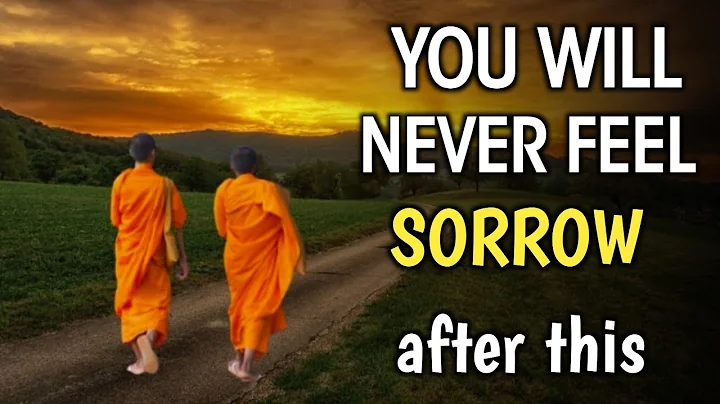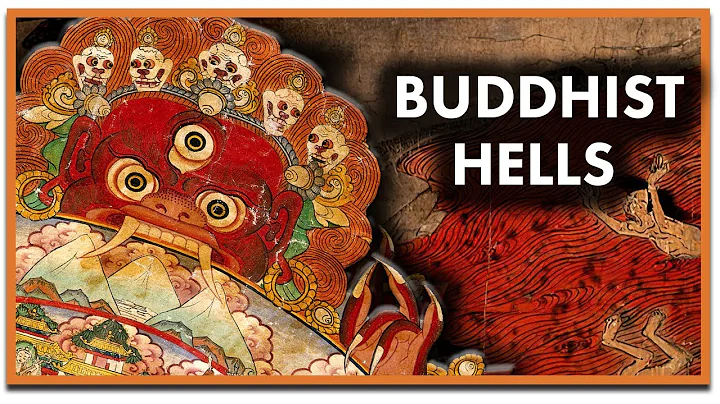After Siddhartha and Govinda left their home, they caught up with a group of ascetic monks and followed them to learn how to practice. What Siddhartha began to practice was to experience pain, voluntarily suffer, then learn to subdue distress, hunger, and desire, and then start practicing to get rid of himself. One way to practice is to let the self penetrate into thousands of strange bodies. For example: "An heron flew over the bamboo forest. In an instant, Siddhartha merged his soul and heron into one. He flew high above the woods and mountains. He turned into a heron, devouring fresh fish. He had the hunger of a heron. He made a heron cry, and he died like a heron."
did this because they thought at that time that as long as the self died, the most essential thing would awaken. In fact, it is what Buddhism calls breaking the ego. However, after practicing for a period of time, Siddhartha quickly questioned these practice methods. Because he discovered that escaping from himself is a temporary relief from the suffering of self-existence, a meaningless brief anesthesia against pain and life, which is similar to the feeling of herders after drinking alcohol, but is not as happy as herders drink a bowl of wine.
In addition, among them, the oldest person is already sixty years old, and is still carrying out such as hard practice, and there is no hope of enlightenment at all. Therefore, Siddhartha began to talk to Govinda many times later, and he believed that these were all about exploring comfort, exploring anesthesia, and learning various practice techniques to gain self-intoxication.
Of course, the practice method described by Hesser is relatively mild, and in the biography of Buddha, the recording method is even more jaw-dropping. Because the practitioners at that time believed that the body was an obstacle, they always couldn't get along with the body and used various methods that seemed to be very harmful to the body today.
Of course, it seems incredible today, but you should know that Buddha lived in an era 2,500 years ago. In that era, China was still in the Shang and Zhou era, and the whole world was relatively ignorant. And at that time, no one had successfully realized the truth, so everyone tried all kinds of strange methods, and there were times.

Of course, whether it is said in the book, Siddhartha used to get rid of himself, or the Buddhist saying that breaks the ego, it is actually not easy to understand. Moreover, emphasizing getting rid of oneself may be a kind of persistence in itself. I think for ordinary people, understanding the following two points will help their lives more.
First: Learn to distinguish between the true self and the self
When it comes to this, everyone probably is a little bit arrogant. Of course, if you first study such a profound philosophical issue as "I", most people will probably give up. In the book "Living Sober", I saw the author discussing "I" in depth. The example given by the author Michael Singer in the book, I think it has helped me understand these concepts very well. (Listen to the recording part for details).
With this example, we can separate ourselves from our true self, which can help us manage emotions, pain, thoughts, thoughts, etc. For example, when we have emotions, we use this method to observe our emotions with the true self and treat emotions as TV, so that the power of emotions will immediately fade away most of them. In fact, many books on emotional management or happiness have proposed similar methods. Personal tests are effective, and I am now insisting on using this method.
We people have emotions, all kinds of thoughts, pains, etc., which is very normal. But if we don’t understand some methods and techniques, but instead wrap our emotions tightly with us, we will be unable to extricate ourselves. At this time, the mood will become stronger and stronger, and instead think that you are defending yourself.
Second point: Understand the knowledge of consciousness and subconsciousness
Consciousness is easy to understand. You can realize it by listening to recordings or reading books now, which belongs to psychological activities at the level of consciousness. Of course, 98% of our psychological activities are unaware of, and this is the subconscious part.The subconscious mind controls most of our emotions, pain, behaviors and decisions, etc. Many of our human emotions and many pains are actually the core source of inducing them in the subconscious mind. For example, you asked your wife to go to the supermarket to bring you a bag of chewing gum, but your wife forgot about it, and you became furious after hearing it. We think rationally that such small things are indeed not worth getting angry, but we were emotionally upset at that time. In fact, your emotions are not about gum at all, but about the idea that you have not received enough attention since childhood and are not taken seriously by your parents. This incident aroused your thoughts and the series of uncomfortable feelings behind this thoughts, so your subconscious mind chose to go crazy for self-protection. Because getting angry gives you the effect of alcohol to strengthen cowards and can relieve your subconscious pain and anxiety.
So, in the future, as long as it is a similar situation, no matter who it is, it will ignite you. This is the logic. I think understanding the above two points should be enough for ordinary people. The reason I expand for everyone is because I think this is our second breakthrough point in improving our own realm - managing ourselves and our true self, and responding easily to emotions and various feelings.

Let’s go back to the novel itself. When Siddhartha practiced with these monks for nearly three years, the story of Buddha Gautama began to be circulated among the crowd. Then, Govinda met a young man who had listened to the Buddha's teachings. The young man spoke vividly, so Govinda also had the idea of going to see the Buddha's style.
Govenda persuaded Siddhartha to walk with him, but when Siddhartha and the old monk came up with their own ideas, the old monk immediately became furious. Siddhartha decided to use the skills he learned from the old monk to subdue the old monk. Siddhartha stood in front of the old monk, close to him, staring at the old man's eyes. Siddhartha's eyes bewitched him, making him dull and unconscious, making him succumb to his will, and ordering him to do what he asked him to do silently.
According to current science, this should be a hypnosis method. In the end, Siddhartha and Govinda left as they wished.
or above is the main content of this chapter. Of course, there is a paragraph in this chapter that is worth noting: "In fact, there is no thing that we call 'learning'. Oh, my friend, in fact, there is only one kind of knowledge, it is universal, it is Atman , it exists in me, in you, and in all living things. So I began to believe that the desire for knowledge and the desire to learn are precisely the hateful enemies of this kind of knowledge." The passage of
is not easy to understand. In fact, if we understand what the Buddha said, "All sentient beings have the virtues of Tathagata", or that everyone in Buddhism has the ability to possess itself, we will understand. Buddhism believes in the true self or Atman, which is inherently existing with our hearts, so we all have the potential to enlightenment. But this ability is covered by the fog. Cultivation is to wipe away the fog bit by bit and retrieve what we already have.
So Siddhartha's words above mean that we don't need these fancy practice methods. We should return to our hearts, experience, perceive, and be aware, and ultimately we can better find our true self. Siddhartha's perception now seems to be relatively correct. From a psychology perspective, awareness is to dig out the things in our subconscious little by little. As long as we can dig out, once we enter consciousness, its influence on us will become smaller. So psychologist Jung said: "When your subconscious mind does not enter your consciousness, that is your destiny."
For example, when buying chewing gum as we mentioned earlier, if you cannot realize that your angry thought is a subconscious mind, then a bad temper is your destiny.
So in the biography of Buddha, the Buddha also learned these dazzling methods at first, but later he realized that these were all wrong, and the method he used in the end was meditation.In fact, the essence of meditation is awareness, which is a method of thinking training. If we do not have the conditions for meditation or are unwilling to do so, then it is enough to be self-aware often. Therefore, the Buddha's ability to become enlightened in the end is consistent with current scientific research.
As for the last sentence above, "The desire to seek knowledge and the desire to learn are precisely the hateful enemies of this kind of knowledge." This may be difficult for ordinary people to understand. In fact, enlightenment is a process of self-experience and self-awareness. If you have to have a great enthusiasm for seeking the truth and the desire to achieve success, then you will deviate. Your attention is on how to seek the Tao and when you have successfully realized the Tao. Instead, you cannot calm down and truly realize it. Therefore, Siddhartha said that the desire to seek knowledge and the desire to learn are precisely the hateful enemies of this kind of knowledge. In essence, there are not many fancy things in enlightenment. Anyone who is fancy outside is actually fooling people, or these people are simplifying the problem and hoping to solve mental and psychological problems through external methods. This is a completely different matter. According to current science, the so-called enlightenment is actually self-awareness, meditation, mindfulness and living in the present. This is a basic consensus reached by scientific research today.
Chapter 2 We have this to say. Welcome to follow the official account: Prisoner's Freedom and get more information. In the next lecture, we will enter the third chapter of this book: Gautama, thank you everyone!







![[English] Who Am I - Lecture 1 - Ven. Guan Cheng - DayDayNews](https://i.ytimg.com/vi/KU0fUs2It5o/hq720.jpg?sqp=-oaymwEcCNAFEJQDSFXyq4qpAw4IARUAAIhCGAFwAcABBg==&rs=AOn4CLDFpQUN_QwRfC7bmP4sUadq-RcYdg)
![A Moving Masterpiece 清明上河图 [English narration] - DayDayNews](https://i.ytimg.com/vi/kxff-4GktOI/hqdefault.jpg?sqp=-oaymwEcCOADEI4CSFXyq4qpAw4IARUAAIhCGAFwAcABBg==&rs=AOn4CLBtHGLeUpJNCYDJYnZTuISQ1N5Vag)


